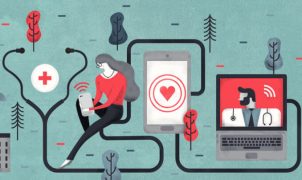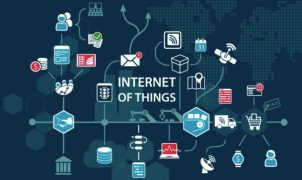Healthcare professionals are turning to robotic assistance to provide more intelligent and comprehensive care for their patients. The healing process can be mentally and physically taxing, especially with a stretched-thin healthcare workforce.
Robotic healthcare is filling gaps and revolutionizing the healing process for both patients and caregivers. Remarkable innovations in recent years have paved the way for the robotics revolution in healthcare.
1. Nursing Robots
As of 2021, the United States is facing a shortage of thousands of nurses in every state, and the shortage is expected to worsen in the coming decade. Nursing robots are stepping in to assist short-staffed healthcare teams.
Nurses often perform repetitive tasks, such as drawing blood and monitoring vital signs, multiple times a day. These essential tasks take a toll on the physical and mental well-being of nurses. Modern healthcare robots can now handle some of these daily tasks.
For instance, a robot equipped with venipuncture capabilities can create a 3D image of a patient’s arm, assisting nurses in locating veins accurately for quicker and less painful blood draws. This not only improves the patient experience but also eases the physical and mental strain on healthcare professionals.

2. Cleaning Robots
The COVID-19 pandemic has emphasized the critical importance of cleaning and sanitizing healthcare facilities. Consistent and high-quality disinfection is crucial in today’s healthcare settings.
Cleaning and disinfecting can be time-consuming and demanding for maintenance staff. Healthcare robots equipped with UV light for disinfection have become a preferred choice. UV disinfection robots can navigate rooms and hallways autonomously, eliminating harmful bacteria, viruses, and germs on surfaces.
3. Exoskeletons
Exoskeletons may not be the first thing that comes to mind when thinking about robots, but they are transforming the rehabilitation process, especially for patients recovering from trauma requiring specialized physical therapy. These robotic exoskeletons act as an external skeleton and muscles, using robotics to train the body to move normally again. They can even aid differently-abled individuals in regaining mobility.
These robotic exoskeletons not only contribute to physical recovery but can also significantly improve the emotional well-being of patients. Being outdoors and moving around has proven to be beneficial for the healing process, reducing stress, and speeding up recovery.
4. Companion Robots
Psychological support is a crucial aspect of the healing journey, and robots have shown surprisingly effective results in providing emotional support to patients. Sometimes, all it takes is someone to talk to or sit with. An excellent example of a companion robot in the workplace is “Stevie,” developed by researchers at Trinity College Dublin.
Stevie was tested in a senior care center with 300 residents, engaging in conversations and even playing games with them. The residents enjoyed spending time with Stevie, inviting him to karaoke nights. Beyond companionship, Stevie continuously monitored residents for signs of illness, recognizing vocal commands like “help me,” and contacting healthcare staff in emergencies.
5. AI Doctors and Trainers
Some of the most effective healthcare robots are actually software-based. AI doctors and trainers have become more prevalent as remote healthcare gains popularity.
AI algorithms aid doctors in early disease detection and accurate diagnosis. An AI can generate a personalized and precise treatment plan tailored to the specific needs of a patient. While such AI is still evolving, it holds the promise of providing patients with the best possible diagnoses and treatment plans.
AI has also revolutionized rehabilitation through virtual reality (VR) exercise games. Popular VR fitness games like “Supernatural” feature AI trainers created from real trainer recordings, encouraging patients to exercise in virtual environments. This immersive approach to recovery in VR proves to be an excellent motivator for patients, promoting positivity.
6. Future Technology: Microbots
Looking further into the future, microbots could significantly reduce recovery times after surgeries. Scientists have been developing microbots for years—tiny robots small enough to move continuously within the human body for repair work.
Instead of invasive surgeries, these microbots could perform tasks from within the body. Due to their small size, they pose minimal risk of tissue damage and other complications compared to traditional surgical methods. Researchers believe that microbots could even replace some pharmaceuticals.
Creating controllable and precise microbots is an extremely challenging task, and researchers worldwide are experimenting with various technological approaches. While it might take some time for microbots to become an everyday tool in healthcare, their implementation could lead to faster, less painful recoveries and more comfortable healing processes.
7. Better Healing with Technology
Robotic healthcare is making the healing process faster, safer, and more intelligent for both caregivers and patients. For healthcare professionals, robotic assistance reduces stress and alleviates workforce shortages. Patients benefit from the companionship, mobility, and personalized care provided by robotic companions.
The healthcare robotics industry is continually evolving, and this is just the beginning. New advancements in the near future are sure to further revolutionize the healthcare sector by creating visually guided treatment methods built on advanced technology.
Cre: smartindustry
























































































































































